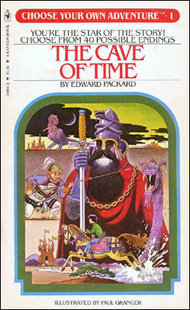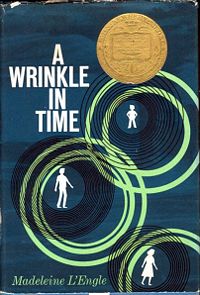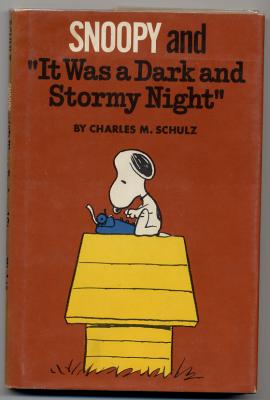It was a dark and stormy exquisite corpse
The 10th annual Blue Metropolis Montreal International Literary Festival begins April 30 and runs until May 4, 2008. During the festival I will teach two workshops on electronic literature as part of the Blue Metropolis Student Literary Programme. The programme is designed for traditional authors to read from their work, discuss writing as an occupation, explore a literary genre with the students and then lead them in practical writing exercises in that genre. The students are then invited to read their creations and discuss them together. There will be between 30 and 50 students in each class. For most this will be their first introduction to electronic literature. For the past few weeks I’ve been wracking my brains trying to figure out how to lead 50 high school students at a time through a two-and-a-half hour hands-on writing workshop in electronic literature with only one computer in the room.
We will begin at the beginning, by looking at pre-internet pre-digital forms of writing that helped put the hyper into the hypertext markup language we know today. Among the printed texts most often cited as being hypertextual: Laurence Sterne’s Tristram Shandy, Julio Cortázar’s Hopscotch, at least half of Joyce, most of Calvino and Borges and just about all of Blake. I doubt any of those authors are covered in high school English – they certainly weren’t in my day.

The “Choose Your Own Adventure” children’s books inspired my early hypertext work: Mythologies of Landforms and Little Girls. But that genre came and went before most of the students in school now were born. And besides, non-linear narrative structures are complex to create individually, let alone in a group. The vision of 50 16 years trying to decide if our hero should take a trip to petition the territorial legislature for better laws and enforcement (turn to page 96) or decide to get other sheep ranchers together and enforce the law herself (turn to page 110) put me in mind of the game Broken Telephone. A re-enactment of the lossy-ness that occurs when data moves through networks would certainly underline a basic Internet principal, but it wouldn’t necessarily count as a writing exercise. Fortunately, thinking about Broken Telephone immediately reminded me of the game Exquisite Corpse.
Exquisite corpse is a method of collective writing invented by Surrealists in 1925. It’s similar to an old parlour game called Consequences in which players write in turn on a sheet of paper, fold it to conceal part of the writing, and then pass it to the next player for a further contribution. Each collaborator adds to a composition in sequence, either by following a rule (e.g. "The adjective noun adverb verb the adjective noun") or by being allowed to see the end of what the previous person contributed. The resulting text is known as an exquisite corpse or cadavre exquis in French. The name comes from the phrase that resulted when Surrealists first played the game:
So we will attempt to write an exquisite corpse together, and then we will attempt to put it online together. A sudden rainstorm last night gave me a great opening line:
This, the quintessential opening line, is now so synonymous with a style of writing characterized by self-serious attempts at dramatic flair, the imitation of formulaic styles, an extravagantly florid style, redundancies, and run-on sentences that it becomes a neutral starting point for us.
One of the interesting things about the phrase "It was a dark and stormy night" in the context of a workshop on electronic literature is how many times it has been altered and adapted to new contexts and new literary forms – including electronic ones, as we shall see.
The phrase "It was a dark and stormy night" was originally written by Victorian novelist Edward Bulwer-Lytton. It was the opening sentence of his 1830 novel Paul Clifford:
Dark and stormy nights are a common cliché in horror and suspense films. Mad scientists always prefer to perform their experiments under cover of a storm. In Mary Shelly’s 1818 novel Frankenstein, chapter 5 begins:
In a number of English translations of Alexandre Dumas's 1844 novel The Three Musketeers, chapter 65 begins with the phrase “It was a dark and stormy night.” In the original French, the opening line of the chapter is C'etait une nuit orageuse et sombre.
Madeleine L'Engle's 1962 novel A Wrinkle in Time also opens with this line. A Wrinkle in Time remains one of my favourite novels of all time. The main character, Meg, is a teenage girl regarded by her peers and teachers as a bad-tempered underachiever. She and a misfit collection of characters travel through the galaxy by means of tesseract, a fifth dimensional concept similar to folding the fabric of space and time. They save the universe of course. It may also be inspiring for aspiring young writers to note that, this award-winning internationally best-selling sci-fi classic was rejected at least 26 times before it was finally accepted for publication.

Charles M. Schulz made the phrase “It was a dark and stormy night” famous in a 1965 comic strip in which Snoopy lugs a typewriter up to the roof of his dog house and writes this novel:

The ever versatile “It was a dark and stormy night” was adapted once again by hip-hop artist Erykah Badu in the opening line of her 1997 song Apple Tree, from the album Baduizm.
Erykah Badu - Baduizm - Appletree (Live at the Jazz Cafe)
“It was a dark and stormy night” is much maligned as the worst opening line ever and there is in fact a Edward Bulwer-Lytton competition for the worst story written from that beginning. But there’s something wonderfully liberating in the knowledge that culturally iconic characters as diverse as Snoopy and Erykah Badu can both start narratives with the same line and move off into completely different directions.
The theme of the over-blown literary cliché is taken up in this video exquisite corpse collaboration, Greatest Story Ever Told:
Each collaborator added to this story in sequence, only being allowed to see THE END of what the previous person contributed.
Our process will be similar. Will be in a hotel conference room with a borrowed computer with Internet access and a web browser but little or no other software. If all goes well we will post our exquisite corpse as a blog. And since blog posts always wind up being read in reverse chronological order – i.e. the first post written appears last on the page – we might attempt to write our narrative in reverse order. Whether we decide to open with it or close with it, with such a rote line as our starting point we know that we can improve upon it.
. . . . .
We will begin at the beginning, by looking at pre-internet pre-digital forms of writing that helped put the hyper into the hypertext markup language we know today. Among the printed texts most often cited as being hypertextual: Laurence Sterne’s Tristram Shandy, Julio Cortázar’s Hopscotch, at least half of Joyce, most of Calvino and Borges and just about all of Blake. I doubt any of those authors are covered in high school English – they certainly weren’t in my day.

The “Choose Your Own Adventure” children’s books inspired my early hypertext work: Mythologies of Landforms and Little Girls. But that genre came and went before most of the students in school now were born. And besides, non-linear narrative structures are complex to create individually, let alone in a group. The vision of 50 16 years trying to decide if our hero should take a trip to petition the territorial legislature for better laws and enforcement (turn to page 96) or decide to get other sheep ranchers together and enforce the law herself (turn to page 110) put me in mind of the game Broken Telephone. A re-enactment of the lossy-ness that occurs when data moves through networks would certainly underline a basic Internet principal, but it wouldn’t necessarily count as a writing exercise. Fortunately, thinking about Broken Telephone immediately reminded me of the game Exquisite Corpse.
Exquisite corpse is a method of collective writing invented by Surrealists in 1925. It’s similar to an old parlour game called Consequences in which players write in turn on a sheet of paper, fold it to conceal part of the writing, and then pass it to the next player for a further contribution. Each collaborator adds to a composition in sequence, either by following a rule (e.g. "The adjective noun adverb verb the adjective noun") or by being allowed to see the end of what the previous person contributed. The resulting text is known as an exquisite corpse or cadavre exquis in French. The name comes from the phrase that resulted when Surrealists first played the game:
"Le cadavre exquis boira le vin nouveau."
The exquisite cadaver shall drink the new wine.
So we will attempt to write an exquisite corpse together, and then we will attempt to put it online together. A sudden rainstorm last night gave me a great opening line:
It was a dark and stormy night…
This, the quintessential opening line, is now so synonymous with a style of writing characterized by self-serious attempts at dramatic flair, the imitation of formulaic styles, an extravagantly florid style, redundancies, and run-on sentences that it becomes a neutral starting point for us.
One of the interesting things about the phrase "It was a dark and stormy night" in the context of a workshop on electronic literature is how many times it has been altered and adapted to new contexts and new literary forms – including electronic ones, as we shall see.
The phrase "It was a dark and stormy night" was originally written by Victorian novelist Edward Bulwer-Lytton. It was the opening sentence of his 1830 novel Paul Clifford:
It was a dark and stormy night; the rain fell in torrents, except at occasional intervals, when it was checked by a violent gust of wind which swept up the streets (for it is in London that our scene lies), rattling along the housetops, and fiercely agitating the scanty flame of the lamps that struggled against the darkness.
Dark and stormy nights are a common cliché in horror and suspense films. Mad scientists always prefer to perform their experiments under cover of a storm. In Mary Shelly’s 1818 novel Frankenstein, chapter 5 begins:
It was on a dreary night of November, that I beheld the accomplishment of my toils. With an anxiety that almost amounted to agony, I collected the instruments of life around me, that I might infuse a spark of being into the lifeless thing that lay at my feet. It was already one in the morning; the rain pattered dismally against the panes, and my candle was nearly burnt out, when, by the glimmer of the half-extinguished light, I saw the dull yellow eye of the creature open; it breathed hard, and a convulsive motion agitated its limbs.
In a number of English translations of Alexandre Dumas's 1844 novel The Three Musketeers, chapter 65 begins with the phrase “It was a dark and stormy night.” In the original French, the opening line of the chapter is C'etait une nuit orageuse et sombre.
Madeleine L'Engle's 1962 novel A Wrinkle in Time also opens with this line. A Wrinkle in Time remains one of my favourite novels of all time. The main character, Meg, is a teenage girl regarded by her peers and teachers as a bad-tempered underachiever. She and a misfit collection of characters travel through the galaxy by means of tesseract, a fifth dimensional concept similar to folding the fabric of space and time. They save the universe of course. It may also be inspiring for aspiring young writers to note that, this award-winning internationally best-selling sci-fi classic was rejected at least 26 times before it was finally accepted for publication.

Charles M. Schulz made the phrase “It was a dark and stormy night” famous in a 1965 comic strip in which Snoopy lugs a typewriter up to the roof of his dog house and writes this novel:
It Was A Dark And Stormy Night, by Snoopy
Part I
It was a dark and stormy night. Suddenly, a shot rang out! A door slammed. The maid screamed.
Suddenly, a pirate ship appeared on the horizon!
While millions of people were starving, the king lived in luxury. Meanwhile, on a small farm in Kansas, a boy was growing up.
Part II
A light snow was falling, and the little girl with the tattered shawl had not sold a violet all day.
At that very moment, a young intern at City Hospital was making an important discovery. The mysterious patient in Room 213 had finally awakened. She moaned softly.
Could it be that she was the sister of the boy in Kansas who loved the girl with the tattered shawl who was the daughter of the maid who had escaped from the pirates?
The intern frowned.
"Stampede!" the foreman shouted, and forty thousand head of cattle thundered down on the tiny camp. The two men rolled on the ground grappling beneath the murderous hooves. A left and a right. A left. Another left and right. An uppercut to the jaw. The fight was over. And so the ranch
was saved.
The young intern sat by himself in one corner of the coffee shop. he had learned about medicine, but more importantly, he had learned something about life.
THE END

The ever versatile “It was a dark and stormy night” was adapted once again by hip-hop artist Erykah Badu in the opening line of her 1997 song Apple Tree, from the album Baduizm.
It was a stormy night
you know the kind where the lightning strike
and I was hangin' out wit some of my "artsy" friends
ooh wee ooh wee oooh
The night was long the night went on
people coolin' out until the break of dawn
incense was burnin' so I'm feelin right -- ah'ight
See I picks my friends like I pick my fruit
& Ganny told me that when I was only a youth
I don't go 'round trying to be what I'm not
I don't waste my time trying ta get what you got
I work at pleasin' me cause I can't please you
and that's why I do what I do
My soul flies free like a willow tree
doo wee doo wee do wee
And if you don't want to be down with me
You don't want to pick from my appletree
Erykah Badu - Baduizm - Appletree (Live at the Jazz Cafe)
“It was a dark and stormy night” is much maligned as the worst opening line ever and there is in fact a Edward Bulwer-Lytton competition for the worst story written from that beginning. But there’s something wonderfully liberating in the knowledge that culturally iconic characters as diverse as Snoopy and Erykah Badu can both start narratives with the same line and move off into completely different directions.
The theme of the over-blown literary cliché is taken up in this video exquisite corpse collaboration, Greatest Story Ever Told:
Each collaborator added to this story in sequence, only being allowed to see THE END of what the previous person contributed.
Our process will be similar. Will be in a hotel conference room with a borrowed computer with Internet access and a web browser but little or no other software. If all goes well we will post our exquisite corpse as a blog. And since blog posts always wind up being read in reverse chronological order – i.e. the first post written appears last on the page – we might attempt to write our narrative in reverse order. Whether we decide to open with it or close with it, with such a rote line as our starting point we know that we can improve upon it.
. . . . .
Labels: Blue Metropolis, electronic literature, writing


1 Comments:
what a delightful, interesting post
now im interested to read how it turned out
Post a Comment
<< Home